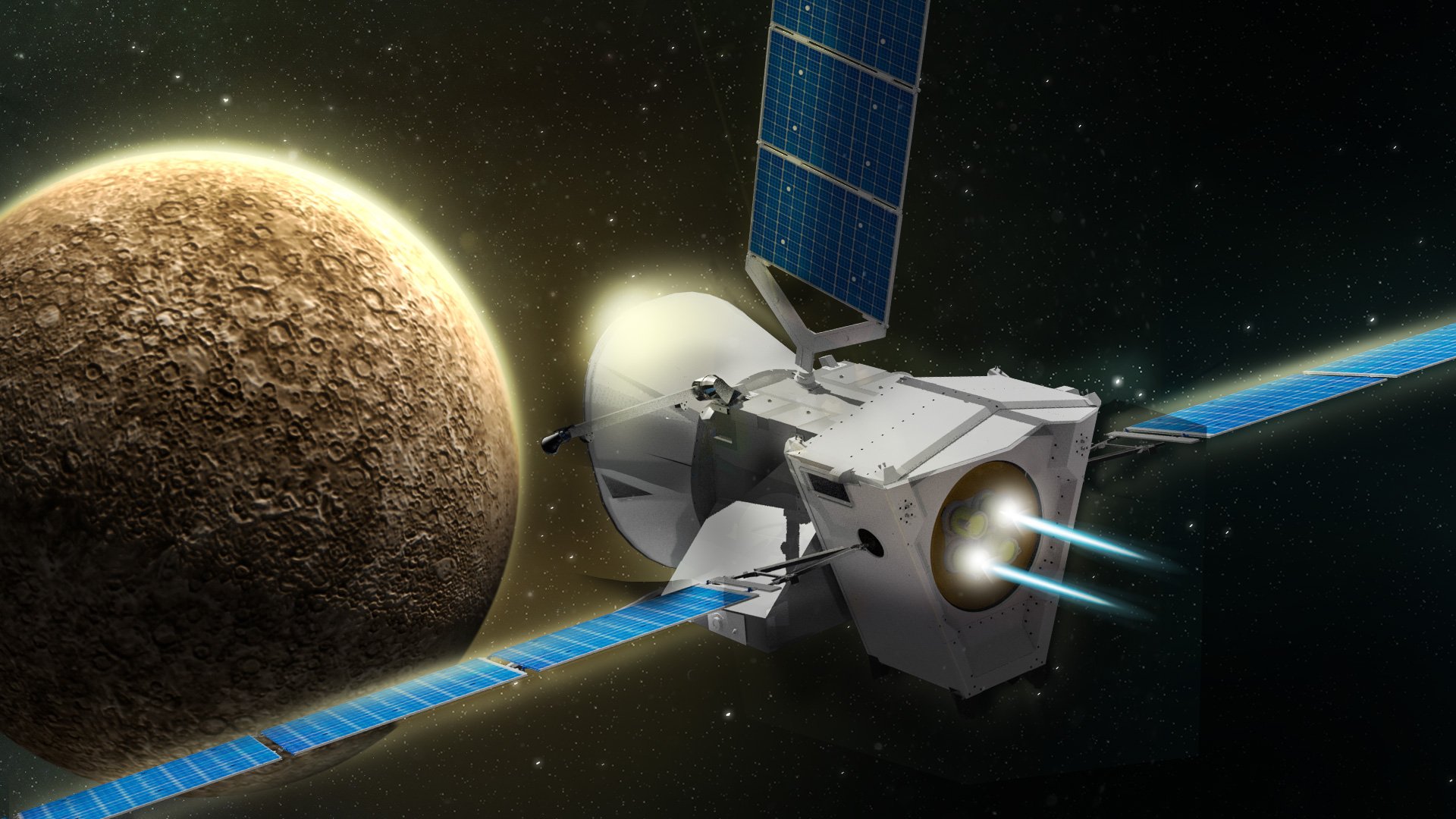The European-Japanese BepiColombo spacecraft swept past Mercury on Friday, 1 October, in the first of six high-speed flybys to gradually set up the probe’s trajectory for a critical manoeuvre in 2025 to enter orbit around the Solar System’s innermost planet.
Since its launch on an Ariane 5 rocket in 2018, BepiColombo has completed a slingshot manoeuvre around Earth and two flybys of Venus to bend its orbit around the Sun closer to Mercury. The encounter with Mercury was the first time BepiColombo visited its ultimate destination, but scientists will have to wait four more years for a full examination of the scorchingly hot planet.
BepiColombo zipped just 199 kilometers (123 miles) above Mercury’s airless surface at 2334 GMT Friday, speeding by the planet barely seven weeks after flying by Venus, according to the European Space Agency.
The flybys use each planet’s gravity to alter BepiColombo’s flight path, reducing the velocity change needed from the spacecraft’s propulsion system.
The spacecraft’s high-speed sojourn through the inner solar system will continue with another flyby of Mercury next June 23. More encounters with Mercury are scheduled in 2023, 2024, and 2025, culminating in a rocket manoeuvre 5 December 2025, to enter orbit around the planet.
BepiColombo consists of a European component called the Mercury Planetary Orbiter and an element called the Mercury Magnetospheric Orbiter supplied by the Japan Aerospace Exploration Agency. The $1.8 billion mission is the second designed to orbit Mercury, following NASA’s MESSENGER spacecraft, which circled the planet from 2011 until 2015.
The flyby provided scientists the first up-close views of Mercury since MESSENGER’s mission ended six years ago.
“The flyby was flawless from the spacecraft point of view, and it’s incredible to finally see our target planet,” said Elsa Montagnon, ESA’s BepiColombo spacecraft operations manager.

The European and Japanese orbiters are accompanied by the Mercury Transfer Module. The propulsion unit carries large solar arrays to generate power for the mission’s ion thrusters, which help reshape BepiColombo’s orbit between planetary flybys.
Shortly before BepiColombo enters orbit around Mercury, the transfer module will jettison from the spacecraft stack. The planetary orbiter will fire thrusters to brake into orbit, then release the Japanese spacecraft to begin its own science mission.
BepiColombo’s European-built science orbiter will map Mercury and study the planet’s geologic history, while the Japanese component of the mission will observe the solar wind’s influence on Mercury.
During Friday’s flyby, two of the three black-and-white monitoring cameras on the Mercury Transfer Module were active, taking pictures of the planet during BepiColombo’s approach and departure. Some portions of the spacecraft are visible in the images.
The spacecraft’s closest approach to Mercury occurred over the planet’s night side, when darkness precluded pictures. The closest image from the flyby was taken at a distance of about 1,000 kilometers (600 miles), ESA said.

Some of the mission’s scientific instruments were collecting data during the flyby Friday.
“It was an incredible feeling seeing these almost-live pictures of Mercury,” said Valetina Galluzzi, co-investigator of BepiColombo’s SIMBIO-SYS imaging system that will be used once in Mercury orbit. “It really made me happy meeting the planet I have been studying since the very first years of my research career, and I am eager to work on new Mercury images in the future.”
The SIMBIO-SYS camera system on the European orbiter will capture colour images of Mercury in high-resolution, but the instrument’s field-of-view is blocked by the Japanese orbiter, meaning it won’t get its first view of the planet until after BepiColombo enters orbit in December 2025.
“It was very exciting to see BepiColombo’s first images of Mercury, and to work out what we were seeing,” said David Rothery of the UK’s Open University, head of ESA’s Mercury Surface and Composition Working Group, in a statement. “It has made me even more enthusiastic to study the top quality science data that we should get when we are in orbit around Mercury, because this is a planet that we really do not yet fully understand.”
Email the author.
Follow Stephen Clark on Twitter: @StephenClark1.



